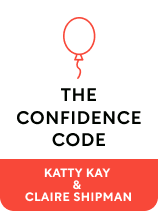

This article is an excerpt from the Shortform book guide to "The Confidence Code" by Katty Kay and Claire Shipman. Shortform has the world's best summaries and analyses of books you should be reading.
Like this article? Sign up for a free trial here .
Are you looking for The Confidence Code quotes by Katty Kay and Claire Shipman? What are some of the most noteworthy passages worth revisiting?
In their book The Confidence Code, Katty Kay and Claire Shipman shed light on the psychology behind confidence. You’ll learn what confidence is, why it’s important, and how women seem predisposed to have less of it than men. You’ll learn where confidence comes from and how to build it.
Below is a selection of The Confidence Code quotes by Katty Kay and Claire Shipman.
The Confidence Code: The Science and Art of Self-Assurance—What Women Should Know
In The Confidence Code, journalists and authors Katty Kay and Claire Shipman examine the art and science of confidence—what it is, why it matters, why women have more trouble accessing it than men, and how this shortage affects professional success, personal achievement, and even happiness. They contend that biology plays a role, but so do systemic inequalities. By and large, however, confidence is a personal choice.
The following The Confidence Code quotes highlight some of the key ideas.
“Think Less. Take Action. Be Authentic.”
This quote encapsulates the three elements of the confidence code:
- Don’t overthink.
- Act.
- Be authentic.
You can practice adhering to the code using the following techniques:
Technique #1: Fail fast. Failing fast is a business strategy that involves trying lots of ideas, expecting that most of them will fail. This is useful as a confidence-building strategy because it inherently involves the same cycle of repeated attempts, failure, and risk-taking necessary for building confidence. Additionally, it combats perfectionism and inhibits overthinking because the cycles are so fast there’s simply not time.
Technique #2: Act, even when you’re uncertain. If you stay inactive in your comfort zone, you won’t improve or gain confidence. If you act, the worst thing that will happen is that you fail. You don’t have to take massive action—it’s fine to start this strategy with baby steps. For example, if you’re not confident about attending parties solo, first, go to a small event where you know people.
Technique #3: Think differently using thought exercises. For example, to control ruminating, whenever you find yourself doing it, think of three things you’ve done well that day.
Technique #4: Change your focus. Women tend to be more confident when they focus on others instead of themselves. Therefore, you can spur yourself to act by thinking about how taking action will benefit others. For example, if you’re nervous about public speaking, tell yourself you’re speaking on behalf of people or a group you care about.
Technique #5: Take credit. When you achieve something, don’t downplay it, attribute it to luck, or be self-deprecating. You deserve your achievements, so take credit for them. If you have trouble taking a compliment, say thank you and tell the person you appreciate them saying it. In moments when you lack confidence, remember these achievements—you’ll become more confident when you remember there’s proof you’ve been successful in the past.
Technique #6: Don’t take things personally. When someone criticizes you at work, remember that this criticism is directed at your work, not you. Also, recognize that women face some obstacles men don’t and this makes things harder for us. We’re not incompetent or less capable; our lives are harder and we don’t have access to the same resources.
Technique #7: Become more comfortable speaking up. You can improve your confidence and speaking abilities by using whatever speaking style is most comfortable, focusing on others, and avoiding upspeak (when the pitch of your voice rises at the end of a sentence, making it sound like you’re asking a question and are uncertain).
Technique #8: Do things differently if necessary. You don’t need to copy men or other people to be confident. If you have a new, more effective way of doing something, pursue it, even if you face criticism.
Technique #9: Don’t rely on external sources of confidence. There’s nothing wrong with comparing yourself to others and enjoying external validation, but it’s dangerous to rely on this as a source of confidence. You’re less likely to act if you fear the action will make people stop praising you, and you’ll be crushed when you don’t get enough praise.
“We believe that we should wait until we are absolutely sure that we are ready for something before we ask for it.”
Here, the authors are discussing perfectionism and its effect on confidence, specifically women’s. Perfectionism is one of the biggest of the self-imposed roadblocks—perfection is unattainable, so if that’s the standard you must meet to be confident, you’ll always feel inadequate and won’t take action. Additionally, perfectionism doesn’t just get in the way of confidence, it gets in the way of achievement—you won’t start work unless you feel perfectly ready to take it on, and you won’t finish it either. For example, a Hewlett-Packard study found that men applied for promotions when they met 60% of the requirements, but women only applied when they met 100%. As women weren’t even applying for certain jobs, they had no chance of getting them.
“Simply put, a woman’s brain is not her friend when it comes to confidence. We think too much and we think about the wrong things. Thinking harder and harder and harder won’t solve our issues, though, it won’t make us more confident, and it most certainly freezes decision making, not to mention action. Remember, the female brain works differently from the male brain; we really do have more going on, we are more keenly aware of everything happening around us, and that all becomes part of our cognitive stew. Ruminating drains the confidence from us. Those negative thoughts, and nightmare scenarios masquerading as problem solving, spin on an endless loop. We render ourselves unable to be in the moment or to trust our instincts because we are captive to those distracting, destructive thoughts, which gradually squeeze all the spontaneity out of life and work. We have got to stop ruminating.”
Men and women have physiological differences in their brains, think in different ways, and have different amounts of relevant hormones. Some of these differences may explain the confidence gap between genders. Specifically, men and women’s brains differ in the following ways.
- Women’s brains produce around half the serotonin men’s do.
- Women who have the two short-strands version of the serotonin transporter are more likely to be anxious than men with this version (though neither sex is more likely than the other to get this version).
- Similarly, women who have the “worrier” COMT variant are more likely to be anxious than men who have it.

———End of Preview———
Like what you just read? Read the rest of the world's best book summary and analysis of Katty Kay and Claire Shipman's "The Confidence Code" at Shortform .
Here's what you'll find in our full The Confidence Code summary :
- An examination of the art and science of confidence
- Why women have more trouble accessing confidence than men
- How to build confidence in yourself and others






